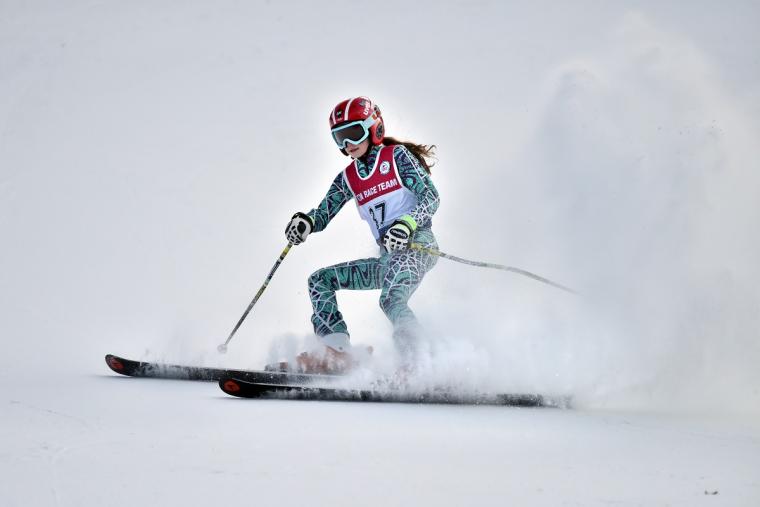
A record number of skiers and riders — 65.4 million — took to the slopes at U.S. ski areas during the 2022-23 season, according to the National Ski Areas Association (NSAA). That’s about a 7% increase over the previous season, marking the second straight season of record visitation.
“[This] signals that the U.S. ski industry is healthy, and that the demand for outdoor recreation is strong,” NSAA officials said earlier this year. “Factors contributing to this record season include a robust snow year in the Rockies and Pacific Southwest regions; growing options of season passes and frequency products; and an increased desire to get outside, especially among lapsed skiers who have returned to the slopes since the pandemic. The number of operating ski areas also jumped from 473 last season to 481 this season, another positive indicator.”
Two of NSAA’s six regions — the Rocky Mountain and Pacific Northwest regions — also had their best years in terms of total number of participants.
That said, the 2023-24 snow season could bring some challenges.
“After three years of moderate La Niña winters, El Niño is poised to return in full force, having major implications for the North American ski season,” according to snowbrains.com. “As of August 2023, El Niño conditions have developed, with the [National Oceanic and Atmospheric Administration] giving it a probability of greater than 95% of lasting through the winter. This number is derived from various physical models forecasting global circulations and feedback mechanisms months in advance. Groups of these models, called ensembles, give us an idea of confidence and certainty when making a forecast. In this case, we are confident that El Niño will persist into the spring.”
Another factor likely pegged to the success of ski resorts going forward will be how well operators navigate climate change. In mid-September, the Associated Press reported:
 As global warming threatens to put much of the ski industry out of business over the next several decades, resorts are beginning to embrace a role as climate activists in the halls of government.
As global warming threatens to put much of the ski industry out of business over the next several decades, resorts are beginning to embrace a role as climate activists in the halls of government.
The industry contributes just a tiny fraction of overall greenhouse gas emissions, which cause climate change, but arguably has outsized influence on popular culture and in the business world.
While many resorts are focused on reducing their own emissions, others are going much further, leveraging their influence to shift public opinion and advocate for climate legislation.
Writer Brittany Peterson noted that Arapahoe Basin in central Colorado several years ago “transitioned from spending thousands of dollars annually to cancel out some carbon emissions by paying for carbon credits to instead funding a staff position focused on reducing on-site emissions.” Now, the ski area has installed five dual-port electric vehicle charging stations in the parking lot.
It’s part of an effort by the ski area to reach net-zero emissions by 2025, in part using credits from the Colorado Carbon Fund to offset some natural gas and diesel Arapahoe Basin will still be burning. Another goal is to divert 75% of waste via recycling and composting programs.
Meanwhile, a study by the University of California San Diego’s Scripps Institution of Oceanography suggests that “some of the state’s ski areas are poised to see a massive amount of [their] snowpack disappear over the next several decades,” according to Outside.com. “Atmospheric rivers cause massive storm systems originating from the Pacific Ocean that tend to be warming, producing snow that starts at the higher elevations, and rain at lower elevations. The Scripps study basically says that these storms will continue to get warmer, pushing the snowline higher and higher. Unfortunately, only three California resorts have summits over 10,000 feet: Mammoth, Kirkwood and Heavenly.”
Indeed, operators of U.S. ski areas are trying to stay ahead of their counterparts in Europe, where another recent study projects that more than half of the country’s ski resorts “will face a severe lack of snow if temperatures rise 2 degrees Celsius above pre-industrial levels, while nearly all would be affected by an increase of 4 degrees — presenting challenges for the industry and policymakers, and threatening a harsher reality for ski lovers,” according to an Associated Press report. The study appeared in Nature Climate Change and noted that “snowmaking … epitomi[z]es some of the key challenges at the nexus between climate change adaptation, mitigation and sustainable development in the mountains.”
In September, local leaders in a French Alps town announced that La Sambuy, a small ski resort, permanently closed after struggling to stay open during recent warm winters — including only four weeks during the 2022-23 season.

